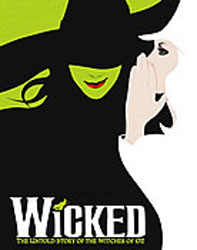Review: Compulsively Mr. Darcy by Nina Benneton
Posted in Review on February 21st, 2012 Compulsively Mr. Darcy by Nina Benneton. Sourcebooks Landmark (February 1, 2012). ISBN: 978-1402262494. 359 Pages. (Amazon: $9.89 / Kindle: $9.99).
Compulsively Mr. Darcy by Nina Benneton. Sourcebooks Landmark (February 1, 2012). ISBN: 978-1402262494. 359 Pages. (Amazon: $9.89 / Kindle: $9.99).
It’s all the rage to adopt a child in a foreign country — and engenders more social status if the child is dissimilar to the adopting couple in ethnicity. So, Mr. and Mrs. Hurst have decided to adopt a child. Charles Bingley decided they needed someone responsible to come along so he invited William Darcy — that it would also get Darcy out of the office was a plus. So, Bingley, Darcy, the Hursts, and Caroline are in Da Nang, Vietnam, to meet with the managing director of Gracechurch Orphange, Jane Bennet, and hopefully pick up their child.
On the way to their hotel, they end up in a traffic jam. Charles can’t stand sitting still so he hops out and asks a man riding a bicycle carrying a load of live chickens if he can try riding it. Of course he falls, scattering chickens and managing to gash his leg badly enough to require stitches. Darcy swings into action and learns of a local hospital with an American doctor, and hires a bicycle taxi to take them there. Darcy can’t bring himself to enter the hospital due to his fear of germs and painful associations, so he opts to wait outside.
When the waiting becomes intolerably longer than it should be, in Darcy’s opinion, he seeks out Bingley only to find him still waiting for treatment. Darcy is outraged and demands to see the doctor while lifting the towel over Bingley’s leg. A glimpse of the blood on Bingley’s leg causes Darcy to faint. A clog prodding his face trying to bring him to consciousness is his first introduction to Dr. Elizabeth Bennet. Neither comes out of this encounter proud of their actions.
Thus begins, Compulsively Mr. Darcy by Nina Benneton. This modern retelling of Pride and Prejudice contains many of Austen’s beloved characters: The Bennets, Darcy and Georgiana, Fitzwilliam, Anne and Catherine de Bourgh, Wickham, Mrs. Reynolds, and a couple of surprises from another Austen novel. However, Benneton has updated them by examining their characteristics and matching them to current medical labels. For example, Mr. Darcy, who we know wants to protect those he cares about and takes all his commitments to others including his tenants and servants very seriously, suffers from, as title of the book implies, OCD (Obsessive Compulsive Disorder). Charles Bingley, on the other hand, has recently been diagnosed with ADD (Attention Deficit Disorder). You can see that Pride and Prejudice makes this seem a very logical character choice from this quote:
“Oh!” cried Miss Bingley, “Charles writes in the most careless way imaginable. He leaves out half his words, and blots the rest.”“My ideas flow so rapidly that I have not time to express them — by which means my letters sometimes convey no ideas at all to my correspondents.”
Being a modern retelling of the story, not only were the characters updated, but the story was revamped to fit into our current society. Darcy is, of course, rich. He’s CEO of DDF (Darcy, Darcy, and Fitzwilliam). Fitzwilliam, his cousin, is a vice president. Bingley also works there. Meanwhile, Jane Bennet, as you’d expect from her patient and loving nature, is a social worker now running an orphanage founded by Aunt Mai and Uncle Gardner while recovering from an abusive relationship. Elizabeth is an doctor specializing in infectious diseases. She moved to Vietnam with Jane to keep her company. The relative social status is maintained as Mr. Bennet is a college professor. The Bennets are middle class and, while not hurting for money, do not spend it wildly either.
My only reservation about the characters is that the Elizabeth Bennet of the original was a great student of character until she allowed her first impressions to cause her to assign to Mr. Darcy characteristics he didn’t actually deserve, after which she became more careful of her judgements. This Elizabeth is impulsive and quick to judge others with minimal data. She makes life changing decisions without consulting those involved in her decisions and without input from those close to her who might be effected. Being a doctor who also does research in her field, this particular implementation of her character seemed too much of a contradiction. How could she possibly maintain her position as one of the top infectious disease specialist and be so incredibly flakey? Other readers may not have as much difficulty with this aspect of her character, but I wanted to make sure she met a very large clue stick. In other areas, it was incredible how these two very different people turned out to be just right for each other — and that takes clever writing when trying to be true to well-loved characters in a new environment and the changes that requires.
While Compulsively Mr. Darcy maintains the fractious nature of the original character’s relationship as they grow towards understanding and love, the details have changed radically since society and social mores are now very different from those of Austen’s time. As with many romances, there are sex scenes. For some traditionalists, this may be off-putting. However, the sex is steamy, fairly graphic (including phone sex), but easily skipped over if you like dislike such scenes. There are also several subplots that deal with today’s problems of inappropriate sexual contact.
Well written, witty, comedic and serious by turns, Compulsively Mr. Darcy has it all — quirky characters, evil villains, surprises, disappointments, and a great love story.
NOTE: Remember, I love to hear from my readers so if you’ve read the book or plan to let me know what you think.






